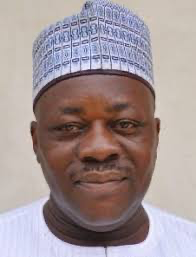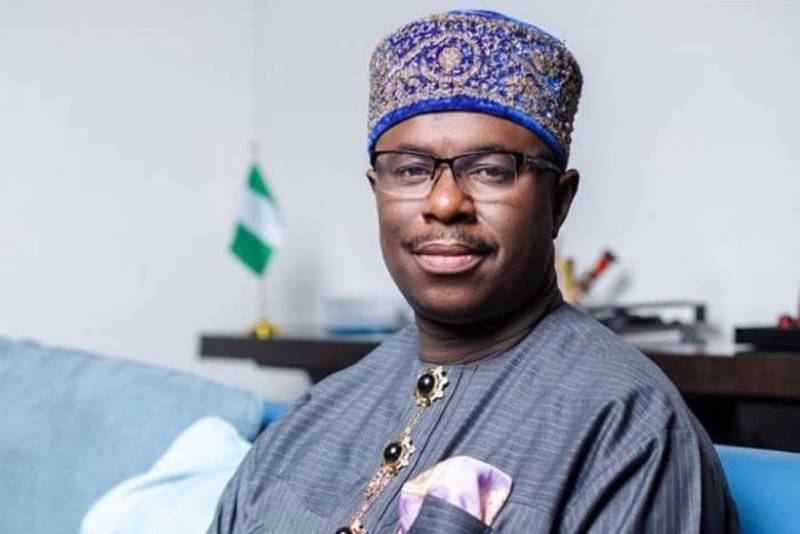Nigeria’s Population Time Bomb
By Julius Ogunro
Nigeria’s population is projected to reach 400 million by 2050, doubling the current estimate. This represents a demographic nightmare for the country that is already beset with several development challenges ranging from acute poverty to governance and political instability.
Current UN estimates put Nigeria’s population at about 211 million. The annual growth is 2.4 percent, which is an additional five million people in the population pool each year. Although the country’s population growth rate is high, more than the global average which is around 1.1 percent, it is not the highest in Africa.
Several African countries have a much higher population growth rate and in fact, the three countries with the highest population growth in the world are in Africa. They are Niger, Angola, and Burkina Faso, which have annual population growth rates of 3.8 percent, 3.3 percent, and 3.0 percent, respectively. However, because Nigeria’s absolute population size is much larger than these countries, it means even with a lower annual growth rate, it contributes more to Africa’s overall population growth.
By 2050, with about 400 million people, Nigeria’s share of the global population would have increased from 2.7 percent to 4.2 percent. It would be the third most populous nation in the world, only behind China and India. Nigeria is seventh right now in terms of global population ranking but in 2050 it would have overtaken Brazil, Pakistan, Indonesia, and the United States to become the third most populous country.
What are the possible implications of this population explosion on socioeconomic and development indicators? How would the demographic changes impact Nigeria’s religious and cultural profile? Where would the major shift in population growth come from?
A high population or active population growth is not necessarily bad. Many countries have leveraged high populations to achieve or accelerate economic growth and development. A case in point is China. A large population confers many advantages to China, including a large labor force and market size. This means that there is always an organic market for the country’s goods and services, one that is not impacted by complex regulations that govern international trade, as well as the existence of a ready labor force. Sometimes, small countries have to provide great incentives to attract skilled or even unskilled workers to fill necessary quotas. China does not have these problems.
Nigeria, however, has not been able to leverage its high population to achieve developmental goals. In fact, as the Nigerian population increases over the years, so have poverty and other developmental challenges. At independence in 1960 with a population of about 43 million people, the poverty ratio was estimated at 15 percent. In the 1980s and 1990s, with a population less than the 100 million mark, the World Bank estimates that about 46 percent of Nigerians were poor due to factors such as political instability, corruption, and economic mismanagement.
By the early 2000s, during the first few years of the Olusegun Obasanjo administration, the poverty estimates had increased to about 70 percent of the total population of about 130 million. However, the poverty ratio was reduced under the Obasanjo administration, which demonstrates a direct correlation between good governance and better economic opportunities.
But why have nations such as China and to some extent India, two countries that bear a lot of demographic similarities to Nigeria at independence, been able to achieve high economic status and Nigeria has not? One significant reason for this may be differences in population structures.
China, by design or accident, has a population structure that provides it with a ‘population dividend,’ where the working-age population is larger than the dependent population of children and the elderly. This has allowed it to achieve high rates of economic growth as a result of increased productivity and savings. Unlike China, Nigeria is not blessed with a population dividend but rather has a ‘youth bulge,’ which means it has a very young median population, in which about 60 percent of its total population is below the age of 25. This leads to higher demand for education, healthcare, and employment opportunities than the country can provide.
The difference in population structure is only half of the story, however. China has also invested heavily in education and training to develop its human capital, leading to a highly skilled workforce that has been critical to the country’s economic success. The government has also implemented policies to encourage innovation and entrepreneurship, which has led to the development of thriving industries. The quality of Nigeria’s education is poor for those lucky enough to be in school and nonexistent for millions of other children. Over time, the parlous condition of Nigeria’s education system is reflected in the country’s economic performance and other developmental indices.
And these developmental indicators tell of a country that is failing. On the human development index, Nigeria is ranked 161 out of 191 countries with a score of 0.539. It is ranked 149 out of 180 countries in Transparency International’s corruption perception index. Nigeria is rated first in the number of out-of-school children with over 20 million kids who are not in school. Nigeria has one of the highest maternal mortality ratios in the world, with an estimated 512 maternal deaths per 100,000 live births. This means that for every 100,000 live births in Nigeria, approximately 512 women die due to pregnancy or childbirth-related complications. Sixty percent of Nigerians, according to the National Bureau of Statistics, are multi-dimensionally poor. And the list could go on and on until infinitum.
Now, the big concern is this: if Nigeria’s economic and overall development indicators are this poor with a population of little over 200 million people, what would they be like in 2050 when the demography is expected to double to about 400 million? Recall that historical precedent shows that Nigeria has never taken advantage of its population bulge, which it treats more as a liability than an asset. The only conclusion one can arrive at therefore is that the country would face more severe economic and political pressures, leading to worsening conditions.
Pause. Consider slowly all the challenges that the country currently faces: insecurity, poverty, inequality, corruption, poor infrastructure, ethnic and religious tensions, as well as governance and political instability. They would be two or three times worse in 2050 if the current trends hold and there is no intervention from a government with a long-term vision.
On the social front, the significant population growth would lead to notable changes in Nigeria’s religious characteristics. As of 2015, the population of Christians and Muslims in Nigeria was almost equal, with the Muslims having a slight edge. A study published by the Pew Research Centre in 2019, based on 2015 data, put the ratio of Christians in Nigeria at 48.1 (86.6m) and Muslims at 50.1 (90m), with the differences being made up by traditional worshippers and irreligious people. But, according to the Pew Centre, by 2060 the total Muslim population would have increased to over 283 million, or 60.1 percent of the population; while although the Christian population would have increased to over 174 million, its share of the total Nigerian population would have decreased to 37. 2 percent from about 48 percent. This may embody socio-political challenges considering how Nigerian politics is interwoven with religion.
In conclusion, Nigeria’s population would experience significant changes in form and volume in years to come. Given the country’s lack of foresight and proactiveness, it is doubtful that it can adequately prepare and take advantage of these population shifts to leverage growth and development. The converse sadly may be true.
Ogunro is the Director of Research and Strategy at Future Now Initiative (FNI), an Abuja-based civil society



